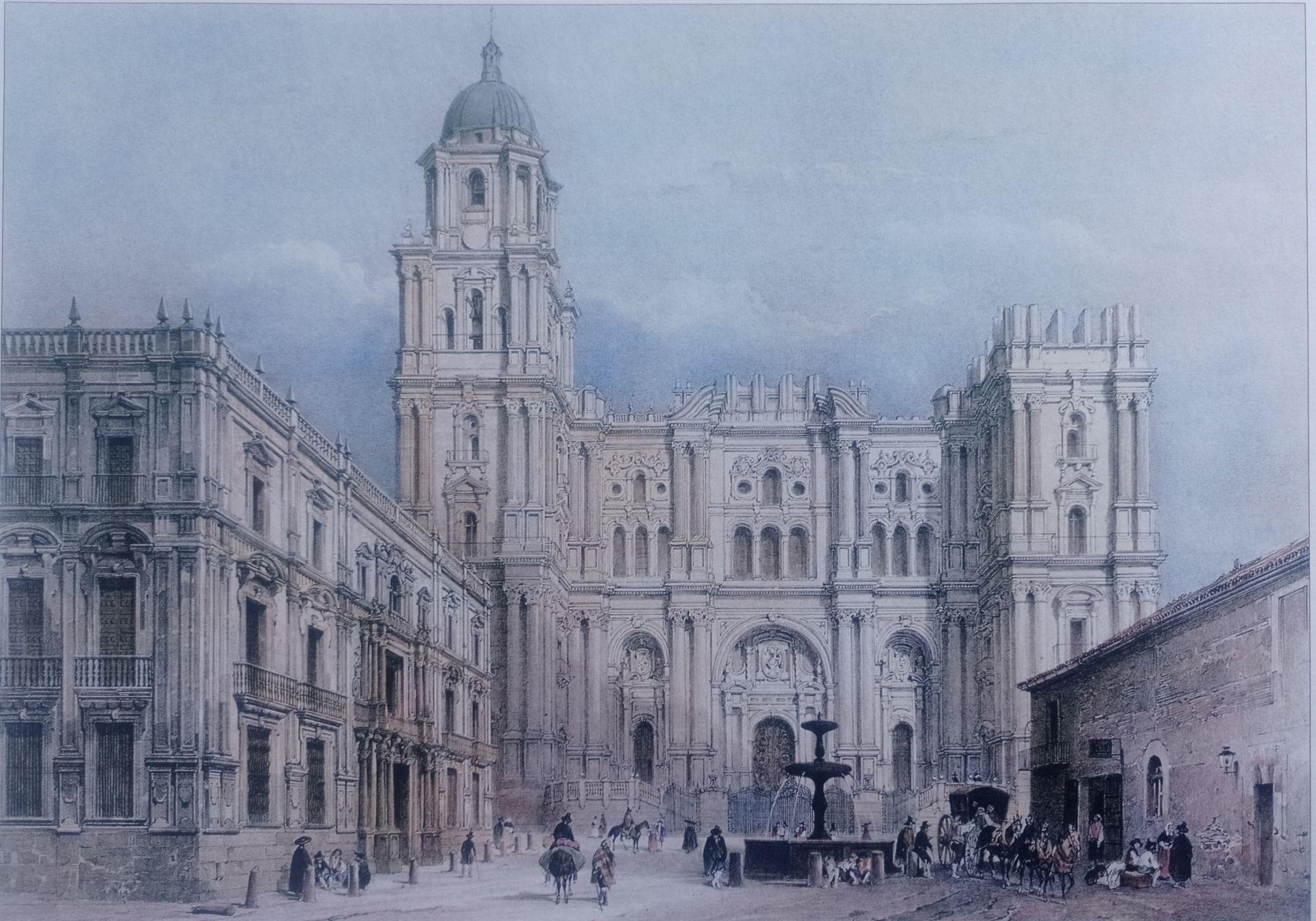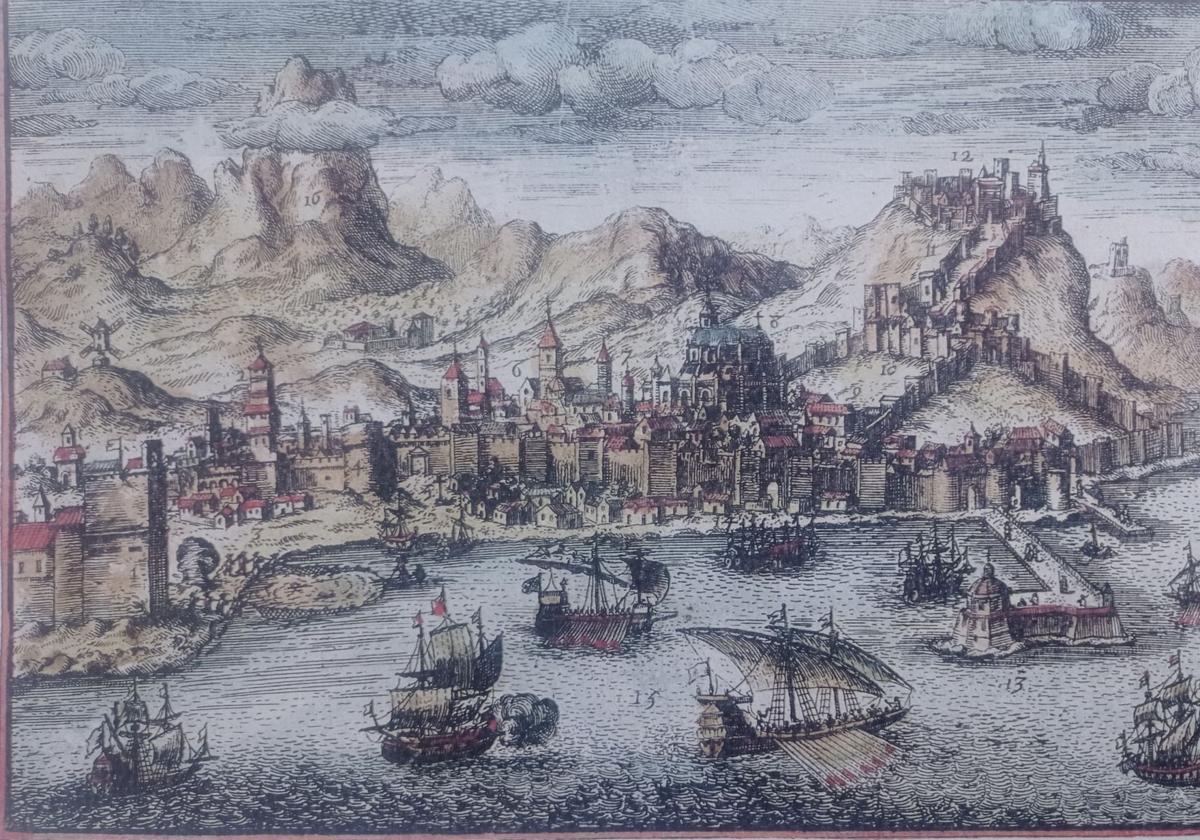When the sea 'went out': the earthquake of 1755 in Malaga
The aftermath of the Great Lisbon earthquakes caused frenzy among the population of southern Spain - including a rumour of the sea retreating in preparation for a tsunami ·
The people of Malaga today may have the impression that in recent times tragedies and misfortunes have been hanging over their heads: economic crises, pandemics, wars, volcanic eruptions and even an unexpected blackout. However, if we look back in history, we can assure you that calamities and catastrophes have always been there.
Perhaps the most famous natural catastrophe of the 18th century was the All Saints' Day earthquake of 1755, also known as the Great Lisbon earthquake. Its epicentre was in the Atlantic Ocean, near the Portuguese capital, although its effects were felt across much of the European continent. It is estimated to have had a magnitude of 8.5 on the Richter scale.
Medina Conde (Spanish archeologist 1726-1798) wrote about the earthquake, explaining that in Malaga on 1 November, the earth shook for eight to ten minutes in the three aftershocks caused by the earthquake between nine and ten o'clock in the morning. In the cathedral, the dean was officiating mass at the high altar and collapsed onto a chair in the chancel, while the congregation fled in terror. Many buildings collapsed, including the convent (Convento de la Encarnación) on Calle Beatas, which had to be rebuilt. Some of the main streets (Calles Nueva, Granada and Beatas) were closed, as it was thought that the vibrations could cause buildings to collapse - after the earthquake left them in a deplorable state.
Throughout the month of November of that year there were several aftershocks, referred to as "palpitaciones" (palpitations) at the time. The most important of all was the one on 27 November, at half past ten in the morning. The tremor lasted between five and ten minutes, which must have felt like an eternity. This aftershock had even more repercussions than the earthquake itself. The people of Malaga were in a constant state of shock and were already aware of the consequences of the earthquake in Cadiz, where a large tsunami devastated part of the coast, causing many deaths and considerable material damage.
So, on 27 November 1755, after the earthquake, the rumour spread among the people of Malaga that "the sea was going out". Others spoke of a voice coming out of the sea. They claimed that the sea was retreating, that the beaches were going to run dry and the boats were stranded many metres from the beach, while a gigantic wave formed on the horizon threatening to swallow the city and its inhabitants. Journalist and author Díaz de Escovar understood that this was, in reality, "a hallucination of frenzied fantasies".

Panic spread among the population and people fled in terror to the mountains, leaving houses and properties abandoned. They left their homes, shops and offices unattended and unlocked; the sick and infirm were forgotten; the friars and nuns escaped from their cells. There was one important monk who had to get rid of his cloak because it hindered his running. There was hardly a person of any state or condition who did not believe that the sea had gone out and that it was necessary to make a hasty escape to the mountains. Malaga was empty.
Some climbed to Gibralfaro, others to the San Cristóbal hill; some found these elevations insufficient and sought a place further away from the coast, taking refuge in the vineyards of Chapera: the present-day municipality of Casabermeja. These mountains were crowned with a huge crowd of people who defied the rain that began to fall that day in a collective psychosis.
Other 18th century disasters
Although the population of Malaga grew steadily in the 18th century - from 24,255 inhabitants in 1717 to 49,049 in 1787 - the century was plagued with disasters and epidemics. In 1719, the dreaded tabardillo (a disease similar to typhus) spread across the city from the port dock, where the troops were given spoiled food. The tabardillo returned in 1738. Three years later, the terrible black vomiting, an infectious disease affected the whole population. This disease arrived from the French island of Martinique.
The plagues continued. The tabardillo epidemic of 1750 killed six thousand people in six months. Finally, the century ended with an epidemic of malaria tertiana. Dreaded famines add to the list of calamities, produced by a succession of bad harvests, such as that of 1734, known as 'la Nanica', and others in 1736 and 1743. Floods caused by the overflowing of the Guadalmedina occurred in 1714, 1722, 1745 and 1764.
In view of the unusual situation, the governor was forced to bring troops into the streets to prevent possible looting - which was also very difficult, as some of the military had also fled. The authorities went around the highlands trying to persuade the population that it was a false alarm: the sea was calm and no huge wave was approaching. Medina Conde explained that "it took a lot of work to get people back to their homes". Malaga residents were reassured that, in the event of an catastrophe, the population would be warned by ringing the bell at Puerta del Mar, known as Espantaperros, where sentries would be permanently posted to keep an eye on the horizon, in case they spotted any suspicious or strange movements at sea.
Little by little, people began to return to their homes. Díaz de Escovar stated that "the strangest thing about the aforementioned alarm was that, despite everyone abandoning their homes, leaving many of them open, not a single object was missing, neither the jewellery from the churches, nor the goods from the abandoned shops".


Comentar es una ventaja exclusiva para registrados
¿Ya eres registrado?
Inicia sesiónNecesitas ser suscriptor para poder responder.
Necesitas ser suscriptor para poder votar.